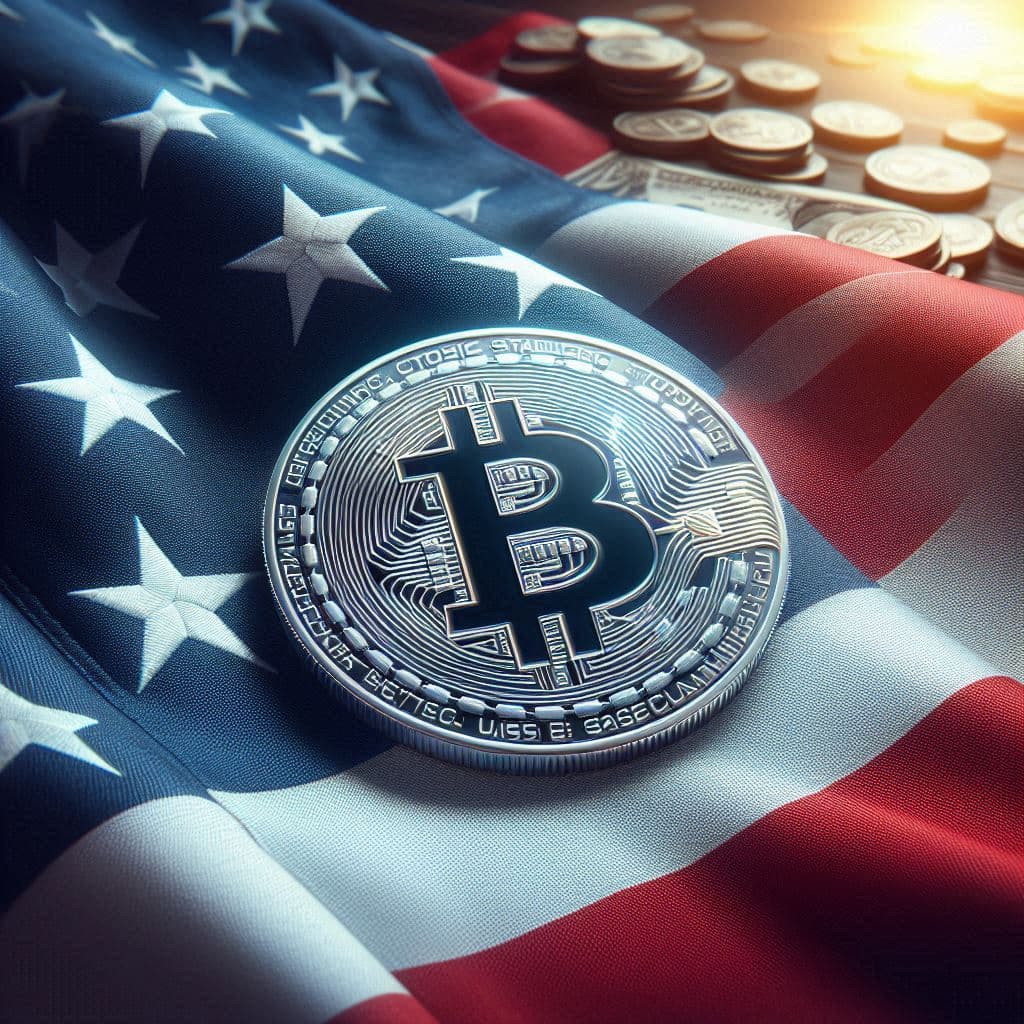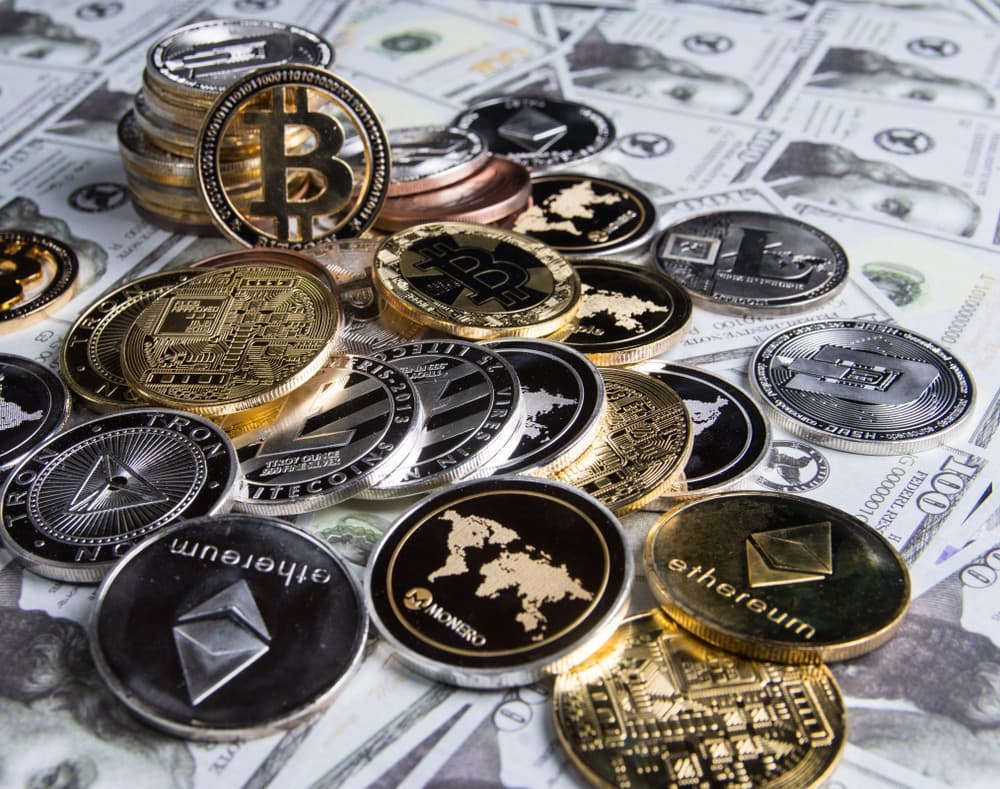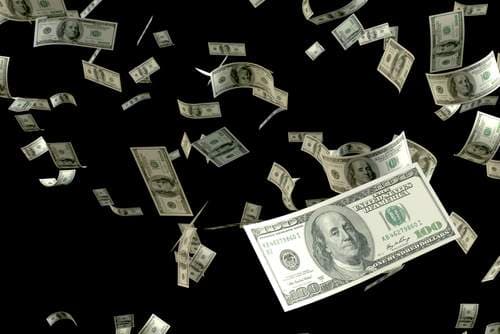Swan Dive
Tariffs, Tokens, and the Battle for the New Dollar
October 14, 2025 • 7 minute, 29 second read

Global equity futures slipped again this morning as U.S.–China trade tensions entered their third act.
Beijing vowed to “fight to the end” following President Trump’s threat of 100% tariffs on Chinese imports after both sides had spent the weekend quietly weaponizing port fees.
Yesterday, China sanctioned five U.S. subsidiaries of South Korea’s Hanwha Ocean and imposed new charges on American-linked vessels, a tit-for-tat ahead of the planned Trump–Xi summit later this month.
Treasury Secretary Scott Bessent accused Beijing of “deliberately undermining global growth,” warning that China’s export controls were “squeezing the arteries of the supply chain” and risked backfiring.
“This isn’t decoupling,” one strategist with whom we might agree told Reuters, “it’s more like economic trench warfare.”
The real economic growth story would be for the U.S. and China to develop win-win tariff strategies.
Right now, if you pay attention to the headlines or people screaming opinions on Fox News, you’d think it would be advantageous to the U.S. to not only punish China for developing its economy… but actively impede them by any means necessary.
We’re fairly confident that’s not how trade works. Quite the opposite.
 Dollar 2.0 and the Battle for Deposits
Dollar 2.0 and the Battle for Deposits
We’ve been getting plenty of questions about the Treasury’s new banking directive — the one warning that U.S. banks’ $6.6 trillion in savings accounts and CDs is “ripe for creative destruction.”
Yes, it’s real. But it’s not a conspiracy. It’s a competition.
The real story here is a coming $20 trillion digital migration of assets over the next three to five years.
As the U.S. pushes ahead with its “Dollar 2.0” initiative, banks, fintechs, and blockchain platforms are lining up to control the new plumbing of the financial system.
As BlackRock CEO Larry Fink says, “We’re at the beginning of the tokenization of all assets. This will define the next decades of capital markets.”
For investors, it’s not about swapping paper dollars for digital ones — it’s about who owns the rails those digital dollars travel on.
Coinbase, Circle, Solana, and maybe Ethereum are the new clearinghouses. Fiscal and trade policy still steer the ship, but the infrastructure below deck is being rebuilt in real time. It’s more than a big deal, and why we’ve spent considerable time and effort researching what’s happening – and the investment opportunities.
You’ll want to pay attention to our Grey Swan event Dollar 2.0: The Final Chapterwe’re releasing with Ian King at 1 p.m. on Thursday. If you haven’t already added your name to the registration list for critical email updates before the release. Click here.
 The Hostages Are Home, but the War Isn’t Over
The Hostages Are Home, but the War Isn’t Over
Markets briefly turned positive this morning after news broke that the remaining hostages in Israel had been freed.
Standing before the Knesset, President Trump hailed “a new dawn of peace,” praising negotiators Jared Kushner and Steve Witkoff for their “unorthodox diplomacy.”
But the next phase looms: Gaza’s reconstruction, Hamas’ disarmament, and the uneasy question of who governs what’s left.
“The Israelis demand disarmament; Hamas was founded on bearing arms,” said Akram Atallah, covering the event for the New York Times. “It’s not a simple administrative measure.” Trump, ever the dealmaker, said he “might still” meet Xi at the APEC forum “if they’re willing to talk trade instead of war.”
 Rare Earths, Hard Currency
Rare Earths, Hard Currency
China’s restrictions on rare earth exports have collided head-on with Washington’s weaponization of the dollar. As the U.S. cuts off trade channels, dollar liquidity tightens globally.
Nations short on reserves are forced to sell gold or Treasuries — sometimes below face value — just to stay solvent. “It’s like a slow-moving margin call for the world,” our favorite Bloomberg columnist, John Authers, wrote yesterday.
Argentina’s recent dollar swap line with the U.S. Treasury underscored the point: run out of dollars, and you’re in triage. Europe may be next.
There are a number of readers who are ticked off that we haven’t been critical of the Argentina bailout. “Why not give that $20 billion to U.S. farmers?” reads a common thread.
We don’t disagree, exactly. But if we’re going to be handing out graft and helping other countries, it’s better the transactions are transparent and the reforms we’re supporting are heading in the right direction.
It’s a small concession we libertarian minded writers have learned to make in the real world over time.
 Cracks in the Machine
Cracks in the Machine
An obscure auto-parts maker, First Brands, became a cautionary tale last week when it collapsed under $10 billion in debt, leaving a trail of unaccounted assets and angry creditors. Jefferies alone is owed $715 million; UBS and BlackRock have exposure too.
The real concern isn’t one firm — it’s the $3 trillion private credit market that financed its growth.
These aren’t “regulated” bank loans as we’ve come to accept them. Caveat emptor, right?
The loans are bespoke, opaque, and often undisclosed until the defaults start. As Politico noted, “If something is going disastrously wrong, it might only be detected once it’s too late.”
For now, markets are merely observing with trepidation.
Just remember – we warned about the dangers lurking in private credit just over a year ago, after our Portfolio Director Andrew Packer took a deep dive into the space.
Grey Swan events can take ages before they start to attract the attention of the mainstream media like the First Brands bankruptcy. We expect more cracks in the private credit market in the months ahead.
 Chips and Power
Chips and Power
OpenAI struck another monster deal — this time with Broadcom — to co-develop 10 gigawatts worth of AI chips. It follows similar pacts with Nvidia, Oracle, and AMD, each designed to feed OpenAI’s relentless demand for computing power. Broadcom’s stock jumped nearly 10% on the news.
“Compute is the new oil,” quipped CNBC’s Jon Fortt this morning. The metaphor isn’t far off. AI data centers are projected to consume 4.4% of global electricity by 2035. The bottleneck won’t be talent or chips — it’ll be power.
 Shutdown, Week Two
Shutdown, Week Two
As markets have the helm, it almost feels like a footnote that the U.S. government shutdown has entered its third week. Tomorrow will be the first round of missing paychecks for non-essential federal employees. The effects are spreading — IRS phone lines dark, national parks shuttered, flight delays piling up.
“Every week this drags on, GDP loses a decimal point,” said Moody’s chief economist Mark Zandi. As for markets? Axios summed it up this way, “The data blackout may soon rival the shutdown itself.” Private sources will have to make up the difference. Given the BLS’ track record over the past several years, that may not be such a bad thing.
 Earnings Season Begins
Earnings Season Begins
This week brings Q3 earnings from JPMorgan, Goldman, Bank of America, Domino’s, J&J, and TSMC – most of which dropped this morning, and are coming in better than expected.
The summer’s rally means expectations are sky-high. But with trade tensions spiking and AI spending squeezing margins, even good results may not be good enough as earnings season unfolds.
“Everyone’s priced for perfection,” wrote Barron’s, “and perfection rarely performs on schedule.”
 The Rich Get the Miles
The Rich Get the Miles
As if to remind us who’s still spending, credit card companies are waging an arms race for America’s wealthiest shoppers.
Since the summer, both Chase and American Express have hiked the annual fees on their premium cards — to $795 and $895, respectively — sweetening the deal with luxury perks: DoorDash memberships, early concert access, Lululemon gear, hotel credits, and points for everything from groceries to private jets.
“The rewards game has become big-game hunting,” The Wall Street Journal reported. With the richest 10% of households accounting for nearly half of U.S. consumption, banks see high-end cardholders as the ultimate prize.
The rest of America, meanwhile, is switching to debit.
~Addison
P.S. Grey Swan Live! this Thursday, October 16 — Dollar 2.0: The Final Chapter.
October 21st marks the day Trump’s bold Dollar 2.0 plan moves from behind-the-scenes policy… to front-page reality.
What’s more important: Once it becomes public knowledge after October 21st, America’s financial system will never be the same again.
That means there’s a very limited window of opportunity for investors like you who are paying attention.
This is literally a once-in-a-generation wealth transfer event.
An entirely new financial blueprint — powered by Dollar 2.0 — and yet the mainstream remains willfully clueless.
My goal, and our goal at the Grey Swan fraternity, is to ensure that you are ready for it. That’s why Ian King and I put together this urgent presentation sharing our research.
Again, if you haven’t already added your name to the registration list for critical email updates before the release. Click here.
If you have any questions for us about the market, send them our way now to: Feedback@GreySwanFraternity.




